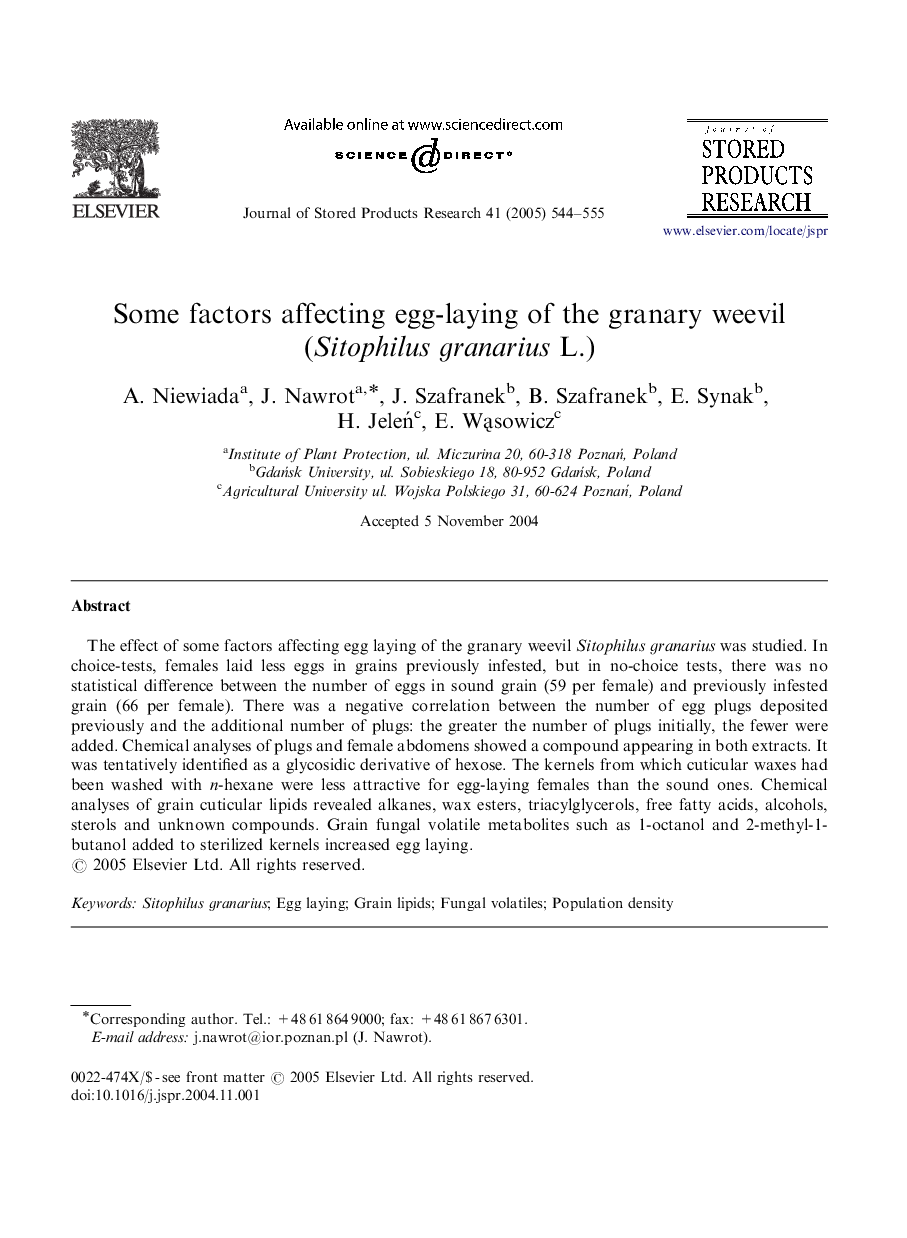| Article ID | Journal | Published Year | Pages | File Type |
|---|---|---|---|---|
| 9474897 | Journal of Stored Products Research | 2005 | 12 Pages |
Abstract
The effect of some factors affecting egg laying of the granary weevil Sitophilus granarius was studied. In choice-tests, females laid less eggs in grains previously infested, but in no-choice tests, there was no statistical difference between the number of eggs in sound grain (59 per female) and previously infested grain (66 per female). There was a negative correlation between the number of egg plugs deposited previously and the additional number of plugs: the greater the number of plugs initially, the fewer were added. Chemical analyses of plugs and female abdomens showed a compound appearing in both extracts. It was tentatively identified as a glycosidic derivative of hexose. The kernels from which cuticular waxes had been washed with n-hexane were less attractive for egg-laying females than the sound ones. Chemical analyses of grain cuticular lipids revealed alkanes, wax esters, triacylglycerols, free fatty acids, alcohols, sterols and unknown compounds. Grain fungal volatile metabolites such as 1-octanol and 2-methyl-1-butanol added to sterilized kernels increased egg laying.
Related Topics
Life Sciences
Agricultural and Biological Sciences
Agronomy and Crop Science
Authors
A. Niewiada, J. Nawrot, J. Szafranek, B. Szafranek, E. Synak, H. JeleÅ, E. WÄ
sowicz,
